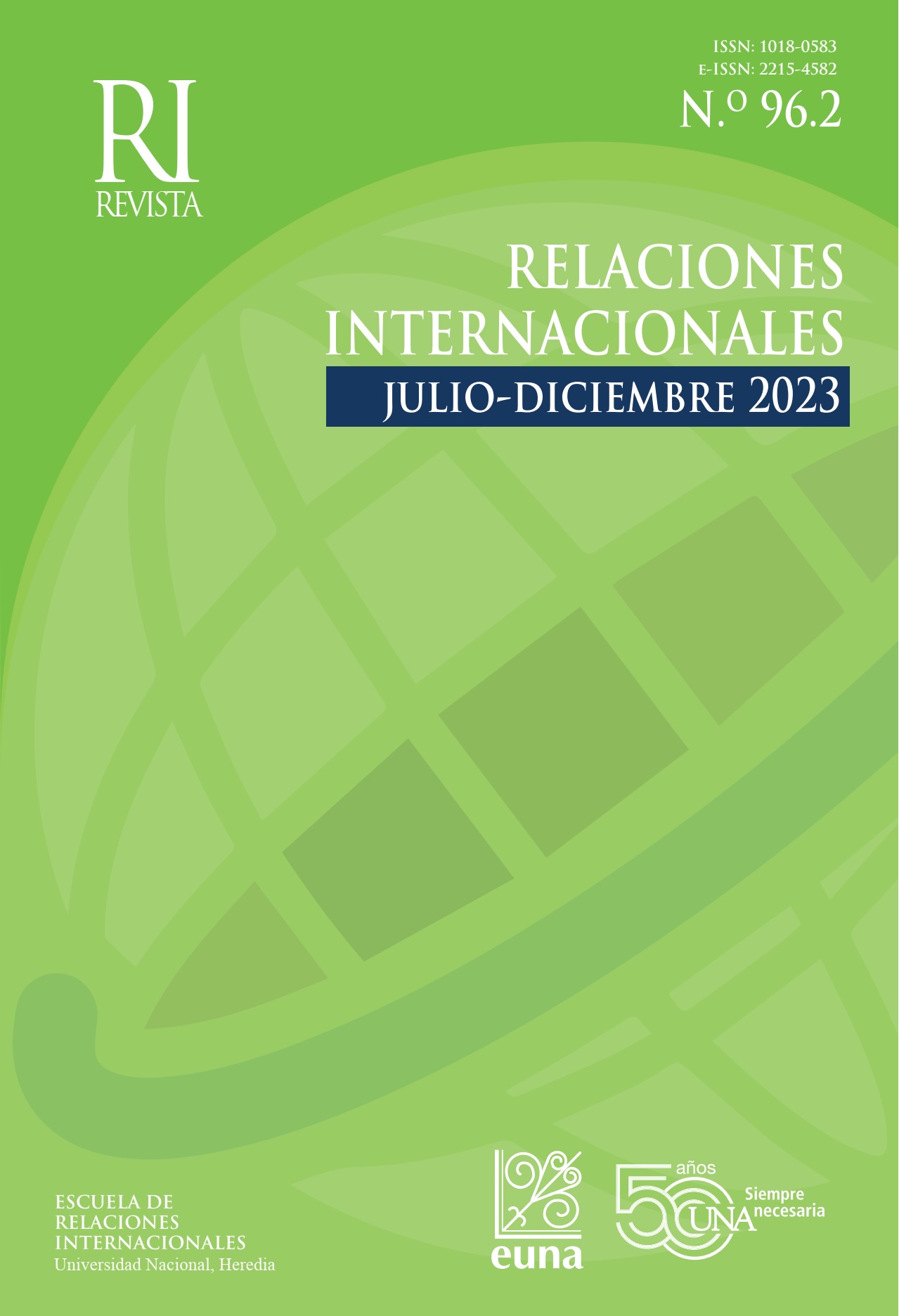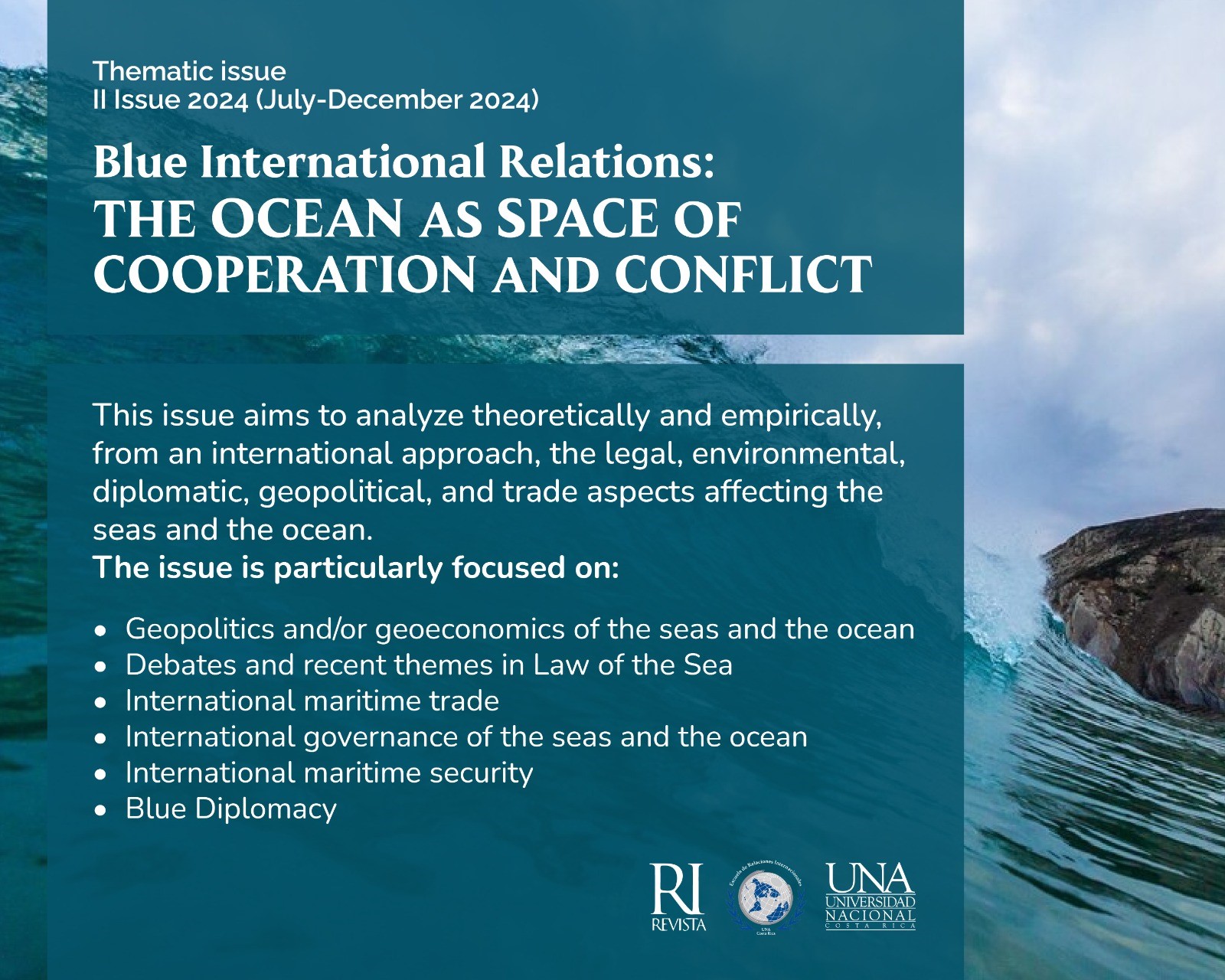Could Economic Growth Propel Costa Rica to Lessen its Environmental Debasement? Environmental Kuznets Curve (1990-2021)
DOI:
https://doi.org/10.15359/ri.96-2.2Keywords:
Climate change, developing countries, econometrics, environmental conservation, Environmental Kuznets Curve, greenhouse gasesAbstract
According to the goals proposed and ratified by the Paris Agreement on 2015 and by the United Nations Conference on Climate Change in 2021, the world should attempt to maintain the global average temperature well below 2° above pre-industrial levels in the long run and to restrain the temperature increase to 1.5°C above pre-industrial levels. One country undertaking bold and charismatic environmental action is Costa Rica. Since the late 1960s, this country has implemented both avant-garde policymaking and practices in the environmental field.As a means of contributing with the analysis and understanding of how to determine this country’s effectiveness and efficiency in its environmental efforts, this research aims to analyze the relationship between Costa Rica’s CO2 emissions per capita with economic growth, expressed via Gross Domestic Product (GDP) per capita (constant 2015 dollars). Thus, the Environmental Kuznets Curve (EKC) hypothesis will be tested to determine if Costa Rica is a good example. Using the database from the World Bank’s (2023) World Development Indicators and from Global Change Data Lab (2023) as a basis of analysis and through the application of quantitative correlational analysis with a type of longitudinal nonexperimental design with time-series data from the year 1990 to the year 2021, it is argued that increases in CO2 emissions per capita are influenced positively with a statistical significance at a 5% error margin by GDP per capita (constant 2015 US dollars), and by energy consumption per capita. Alternatively, CO2 emissions per capita are influenced negatively with statistical significance at 5 % error margin respectively by GDP per capita squared (constant 2015 US dollars) and land use change per capita. However, these results cannot be confirmed with reliability and robustness because of the ambivalence and ambiguity present in the proposed model as a consequence of the likelihood of the presence of multicollinearity among the variables and the lack of normality of the dependent variable. Despite the initial promising results of a high goodness-of fit test, an acceptable F-statistic, the lack of heteroscedasticity, and an acceptable result showing no autocorrelation presence, the hypothesis of this study cannot be answered affirmatively. Despite these results, there is room for more research to confirm if the EKC hypothesis continues to be applicable in this country. This study could serve as a reference point for decision-makers regionally and internationally to guide their local environmental efforts towards concrete achievements for obtaining a clean planet in the future.
References
Adkins, L. & Hill, R. (2007). Using Stata for Principles of Econometrics. Wiley.
AlKhars, M. Alwahaishi, S., Fallatah,M., Kayal, A. (2022, June). A Literature Review of the Environmental Kuznets Curve in GCC for 2010–2020. Environmental and Sustainability Indicators 14. https://www.sciencedirect.com/science/article/pii/S2665972722000137?via%3Dihub
Beckerman, W. (1992). Economic Growth and the Environment: Whose Growth? Whose Environment? World Development, 20, 481-496.
Bratt, L. (2012). Three Totally Different Environmental/GDP Curves. In: C. Ghenai, (Ed.), Sustainable Development – Education, Business and Management
Architecture and Building Construction - Agriculture and Food Security (283-312). InTechOpen. https://www.intechopen.com/chapters/29283
Cederborg, J. and Snobohn, S. (2016). Is there a relationship between economic growth and carbon dioxide emissions?. Södertörns University. http://sh.divaportal.org/smash/get/diva2:1076315/FULLTEXT01.pdf
Daly, H. (1973). Toward a Steady State Economy. W.H. Freeman.
Dinda, S. (2004). Environmental Kuznets Curve Hypothesis: A Survey. Ecological Economics, 49(4), 431-455.
Earth.org (2021, October 21st). How Costa Rica Reversed Deforestation and Became an Environmental Model. https://earth.org/how-costa-rica-reversed-deforestation/#
Fernández, A. (2005). Econometría. Pearson.
Garg, A. (2023, June 5th). Celebrating World Environment Day: Costa Rica’s Commitment to a Cleaner and Greener Environment. The Tico Times. https://ticotimes.net/2023/06/05/celebrating-world-environment-day-costa-ricascommitment-to-a-cleaner-and-greener-environment
Global Change Data Lab (2023). Our World in Data. https://github.com/owid/co2-data.
Global Footprint Network (2023). Glossary. https://www.footprintnetwork.org/resources/glossary/#Ecologicalfootprint
Global Footprint Network (2023). Costa Rica. https://data.footprintnetwork.org/?_ga=2.24633274.1018889602.1685676246-24363986.1685676246#/
Global Forest Watch (2021). Costa Rica, para. 1. https://www.globalforestwatch.org/dashboards/country/CRI.
Grossman, G. and Krueger, A. B., (1991). Environmental Impacts of a North American Free Trade Agreement. National Bureau of Economic Research Working Paper 3914. https://www.nber.org/system/files/working_papers/w3914/w3914.pdf
Gujarati, D. (1997). Econometría. McGraw Hill.
Hettige, H., Dasgupta, S. & Wheeler, D., 2000. What Improves Environmental Compliance? Evidence from Mexican Industry. Journal of Environmental Economics and Management, 91(1), 39–66.
Intergovernmental Panel on Climate Change (IPCC), (2023). Climate Change 2023: Synthesis Report. A Report of the Intergovernmental Panel on Climate Change. [Core Writing Team, H. Lee and J. Romero (eds.)]. IPCC, https://www.ipcc.ch/report/ar6/syr/downloads/report/IPCC_AR6_SYR_SPM.pdf
Kuznets, S. (1955). Economic Growth and Income Inequality. American Economic Review, 49, 1-28. https://assets.aeaweb.org/asset-server/files/9438.pdf
Panayotou, T. (1993). Empirical tests and policy anaiysis of environmental degradation at different stages of economic Development, Working Paper WP238,
Technology and Employment Programme, International Labor Office. https://www.ilo.org/public/libdoc/ilo/1993/93B09_31_engl.pdf
Selden, T., and Song, D. (1994). Environmental quality and popudevelopment: Is there a Kuznets curve for air pollution?, Journal of Environmental Economics and Environmental Management, Vol. 27, 147-162. https://www.sciencedirect.com/science/article/pii/S009506968471031X
Steed, B. (2003). Completing the Mosaic: The Conservation of Private Lands in Costa Rica J. Land Use Environmental Law 23, 173–218.
Stern, D. (2004). The Rise and Fall of the Environmental Kuznets Curve. World Development 32 (8), 1419-1439.
United Nations Environment Programme (2019, September 19th). Costa Rica Named ‘UN Champion of the Earth’ for Pioneering Role in Fighting Climate Change. https://www.unep.org/news-and-stories/press-release/
costa-rica-named-un-champion-earth-pioneering-role-fighting-climate
United Nations Secretary General (1987). Report of the World Commission on Environment and Development: Our Common Future [The Brundtland Report] https://sustainabledevelopment.un.org/content/documents/5987ourcommon-future.pdf
Vukina, T., Solakoglu, E. G. & Beghin, J. C. (1999). Transition to Markets and the Environment: Effects of the Change in the Composition of Manufacturing Output. Environment and Development Economics, 4(4), 582-598.
Watson V, et al. (1998). Making Space for Better Forestry: Policy that Works for Forests and People. Centro Científico Tropical and the International Institute for Environment and Development.
World Bank (1992). World Development Report 1992: Development and the Environment, Oxford University Press.
World Bank (2023). World Development Indicators. https://databank.worldbank.org/source/world-development-indicators.
United Nations Secretary General (1987). Report of the World Commission on Environment and Development Our Common Future. https://sustainabledevelopment.un.org/content/documents/5987our-common-future.pdf
World Resources Institute (2023). Indicators of Forest Extent: Forest loss. https://research.wri.org/gfr/forest-extent-indicators/forest-loss
Downloads
Published
How to Cite
Issue
Section
License

Revista de Relaciones Internacionales por Universidad Nacional de Costa Rica está bajo una Licencia Creative Commons Atribución-NoComercial-SinDerivar 4.0 Internacional








1.png)







3.png)
